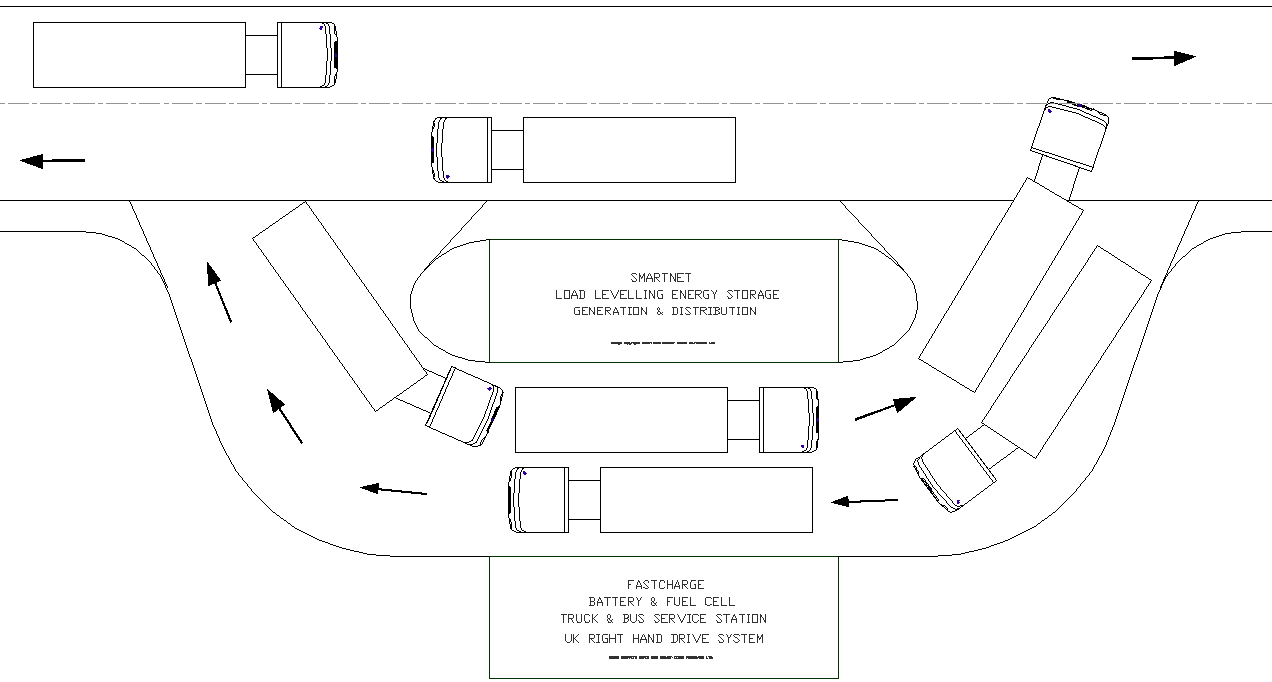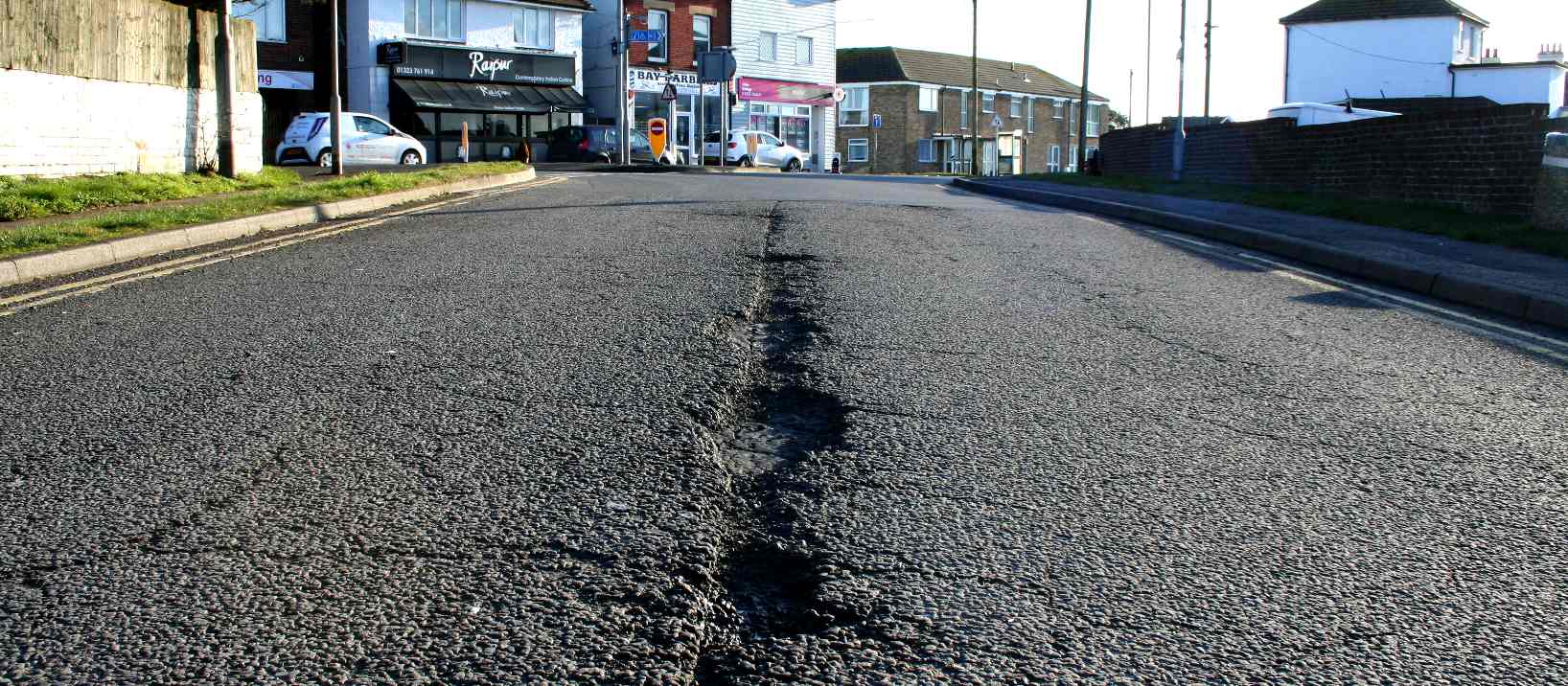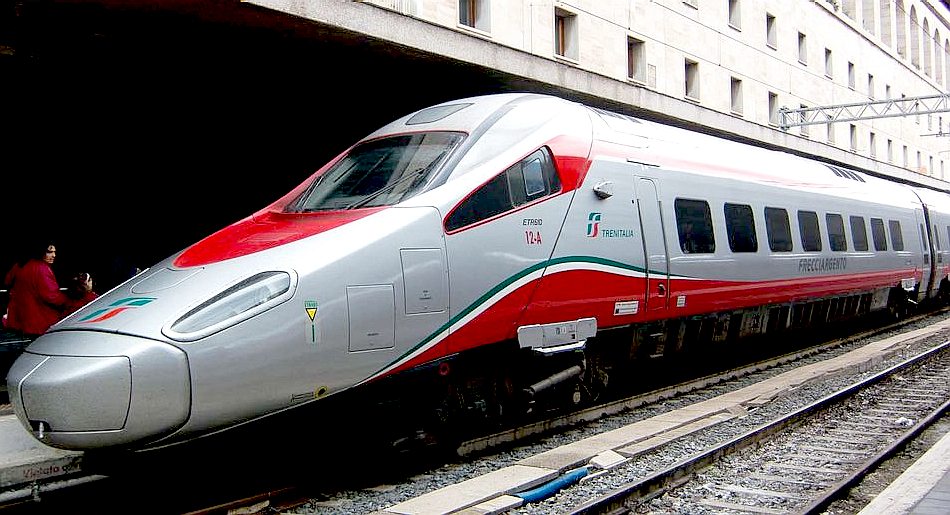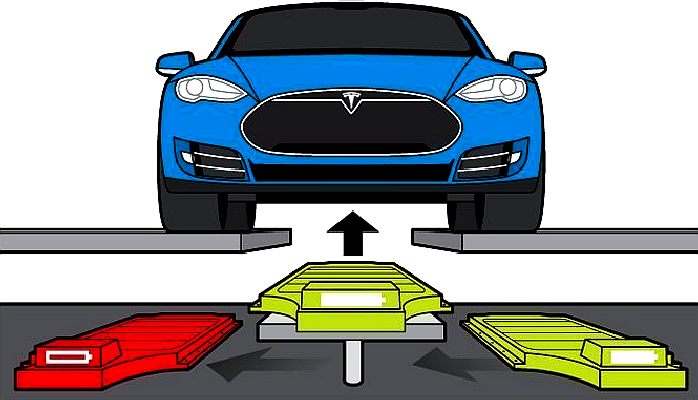|
BUSINESS PARTNERSHIPS
Please use our A-Z INDEX to navigate this site or see HOME
|
|
DUAL PURPOSE BATTERY STORE - This diagram shows a SMARTNET service facility in plan view, with articulated trucks turning in from a (UK right hand drive) main road, into the service station - passing through for battery swapping - and then exiting back onto the main road. The suggested layout speeds up refills and assists traffic flow in busy cities. This battery storage facility carries 60 standard cartridges, but can carry 96 battery units in the same footprint. Alternatively, a flat-pack station with a smaller footprint can be installed in congested towns. Electricity can be stored in the facility for load levelling, then fed back to the local grid for distribution, to use wind and solar generated energy more efficiently.
As an aid to the electrification of cities for bus based public transport, stations like these would avoid the need to install thousands of individual charging points along individual routes, meaning that 2030 climate change targets might be met.
The automotive industry is the biggest in the world with around 1.3 billion cars filled up roughly once every two-four weeks with liquid fossil fuels.
The electricity generating industry is the biggest service industry, supplying billions of homes and commercial premises with energy, now also catering for what is set to be a major increase in power for electric vehicles during a transition from fossil fuel generated electricity to renewables. So introducing the need for storage in the distribution chain.
The starting point for development of this concept as a business, is to look at the needs of potential customers and to be able to deliver what is required to assure each customer that their situation will be catered for in the transition to a low carbon economy. These needs will form the basis of our Business Plan.
The beneficial customers are:
a) Electricity generators - supply distribution, storage and management
b) Vehicle manufacturers - supply of compatible energy cartridges
c) Motorists and hauliers
d) Domestic use in homes
e) Industry
f) Governments
The difficulty when introducing disruptive technology, is how to enter the market where there is no immediate demand for your service and where you challenge the status quo.
In this case the service is a dual purpose battery based energy storage system, where only one use has a market and where the other use - for refueling vehicles - needs to be developed. But is more future proofing for the expansion of electric transportation.
These are five suggested ways to proceed:
1. Via generating utilities 3. Via City Councils 4. Setting up as independent energy supply companies 5. A flexible mixture of the above
1. - Generating companies might use the proposed smart stations as load leveling energy storage banks, using battery cartridges that are compatible with a system for buses and trucks (where those units are also suitable for cars and vans).
The idea being that with service stations in situ for energy storage, auto manufacturers might then manufacture compatible vehicles - to take advantage of the roadside service stations.
In that public transport is more market ready, it makes sense to start with bus services in cities and towns and work up to truck recharging, then to cars.
This will represent as an investment opportunity in the future of zero emission transportation, as a counter to climate change. It offers participants a method of meeting their obligations, and the obligations of their Governments.
2. - Bus and truck manufacturers might use the proposed cartridge swap system, where they fit battery cartridges to their electric vehicles in any event. Fitting a compatible battery future proofs their vehicles and makes them more attractive to vehicle operators as a forward investment.
3. City Councils are looking for ways to provide public transport that is cost effective and reliable. E buses that may be recharged instantly using battery swapping, represents a less disruptive alternative to fast roadside charging stations that would otherwise place additional strain on the grid.
4. The battery storage stations might be used to purchase electricity off peak, and re-supply to local grids at peak rates.
5. By promoting the best features of 1-3 above to stakeholders, the individual opportunities present as a more interesting package to investors in a clean future.
THE CHALLENGE
The challenge is to provide a system to replace fossil fueled vehicles with electricity as the new fuel starting in 10-12 years (2030-2032), when the Europe wide ban on the sales of new petrol/diesel vehicles comes into effect. That would give us 8-10 years past the cut off point to complete the phase in of EV refuelling stations to supplement and finally replace petrol and diesel stations.
In this case there are two types of customer, the end users (private and business). Each type of customer wants to travel or transport goods from A to B. The administration of each Country charges them (road) taxes for that privilege - but must in return for those taxes ensure that mobility is secured for their citizens and corporations. This contract between Country and road user will form the basis of our Business Plan. At the present time the poor (potholed) condition of many roads constitutes a breach of contract on the part of the charging Nations, about which the customer should have a right of redress - as in compensation (tax relief's) until roads are restored.
POTHOLE POLITICS - If the state of an economy can be measured by the condition of the country's roads, we in deep trouble. But how did it get so bad? Where have our Road taxes gone? Why is there no infrastructure for zero emission vehicles. Sadly, it all seems to dovetail. One area of services that is substandard seems to flow into other areas that need attention. If we cannot keep our roads in good condition, what chance do we have for a reliable infrastructure for electric vehicles?
PRIVATISATION V NATIONALISATION
The biggest customers are likely to be individual Nations where they own the roads - and charge for their use, whereas, those Nations may decide to look to their auto manufacturers to provide vehicles, but also where electricity utilities that are mostly State owned, and they must provide the energy for the vehicles that use their roads.
There are very few state owned vehicle manufacturers, they are mostly private companies. Any vehicle operator may use the (sometimes poorly maintained, potholed & substandard) roads in return for a road tax.
There may be instances where the infrastructure in nationalised. Take the railways as an example of electrified transport. The tracks may be owned by the state, but devolved government to local bodies means privatised services are more commonplace.
Individual Nations may, though, sign up to supporting the provision of a renewables based transport energy infrastructure, or in the alternative, grant licenses for geographical regions to private enterprise in return for guarantees should there ever come a time when the State wishes to take control.
On this basis every Country is a potential customer or investor in terms of policies and providing assurances of support, including legislation by way of guarantees to private investors as to realizable values in the event of takeover and electricity supplies to service station operators.
Lobbying and securing the provision of such State licenses and guarantees, including where appropriate, legislation to protect investors, will form the basis of our Business Plan.
AUTO MAKERS
The responsibility for providing suitable vehicles rests with the world's manufacturers of automobiles.
Having granted them the right to compete for sales, they are morally bound to comply with the wishes of the state when it comes to fuels. Generally, the State dictates targets via statutory targets.
The difficulty for car makers is the lack of infrastructure to support quantity sales of EVs. On this score the EU has let down the car makers, putting them in a situation where if they were to provide the EVs the EU is demanding, they could be bankrupted.
The solution is a standard energy cartridge. The development of this core technology will form the basis of our Business Plan.
INVENTIVE - Where there is a will, there is a way. Hundreds of engineers are now looking for a solution to EV refuelling. We think that eventually they will succeed, but that there will be a few dead ends on the way.
UTILITIES - THE AGE OF ELECTRICITY
The responsibility for providing energy for electric vehicles rests with electricity generators, whether renewable or not. This is a basic duty of care.
This does not necessarily mean providing service stations, but at least selling electricity to station operators at competitive rates and free of discrimination and surcharges - as part of their duty of care.
There must be a level playing field, where the utilities have had ample opportunity to develop EV service stations, but have not risen to the challenge - and operate as virtual monopolies. For that reason they are likely to consider playing red-flag hard-ball in seeking to prevent independent energy storage competition, where once there is a developed system this will represent a new market opportunity for them to exploit and seek to absorb to reinforce their monopoly positions.
But, if they have not contributed to that development and protections are not in place, such enterprise will come to them at no cost. That would of course be unfair to the developers taking the technology advancement risks.
Hence, those who contribute at an early stage in development will thus be given the initial options to supply and/or otherwise benefit from the new market opportunity and state granted rights.
According to Power-Technology.com, a website that provides market and customer insights in this sector, they listed these power companies (according to the 2018 Forbes calculation of net market capitalization, assets, sales and profit) as the biggest utilities:
DOE Department of Energy USA Engie E.ON GE General Electric Iberdrola KEPCO Korean Electric Power Corporation National Electric Grid & Central Electricity Authority (India) National
Energy Board (Canada) Siemens Gamesa State Grid Corporation of China TEPCO Tokyo Electric Power Company
We do not propose installing our own wind turbines and solar farms, but that remains a longer term possibility. In the interests of expediency, we might purchase electricity from existing power companies. This could include a mix of fossil fuel and renewables, the aim being for a transition to 100% renewable electricity as soon as possible.
DRIVERS
Drivers can only buy what the auto makers offer them. Our objective is to be able to demonstrate that the technology exists to allow them to swap their petrol and diesel steeds for clean electrics, without sacrificing convenience.
This demands confidence in the vehicles that are being sold. Such confidence may only be provided by service stations to equal the convenience of liquid fossil fuel stations. This level of convenience is the basis of our Business Plan.
STATE OF THE ART
TESLA S CARTRIDGE EXCHANGE - This concept is not a million miles away from SMARTNET, except that the underground method makes it expensive and complicated. This is a variation of the Better Place system. The point here is that with a bit of tweaking, FASTCHARGE can be made to work in practical terms.
1900 - Cartridges as an energy transfer medium were first used by Professor Porsche in the early 1900s. He then increased range with petrol dynamo and gave up when petrol cars got electric starter motors.
1990 - Buses with cartridge exchange were used at Kobe, Japan, in the 1990s.
2009 - The next serious attempt to perfect the concept came with Shai Agassi's 'Better Place' system, using service stations in Denmark and Israel, but only for batteries as the energy storage medium. The service stations were expensive and the loading mechanism complicated, but were still planned for California, but the company folded in 2013.
2013 - Elon Musk came next with a Tesla S production vehicle modified to swap cartridges. Once again the underground (or above ground stage) required expensive installations, and this system was only for battery cartridges. Tesla is now concentrating on rapid charge stations.
2014 - William Li starts NIO, by 2019 the company has sold over 9,000 units and installed a number of battery swap stations.
2017 - PowerSwap swaps from liquid to solid cartridge energy storage, announcing their system in December 2017.
2019 - BattSwap comes online.
2020 - The proposed SmartNet system aims to resolve the shortcomings of the above systems, as the basis for our Business Plan.
Networked flat pack service stations may be made available to any utility, supermarket or energy trading company, but also entrepreneurs who might operate as independent franchises.
CONTACTS
Solar House BN27 1RF, United Kingdom PIC No: 895922168
LINKS & REFERENCE
https://ec.europa.eu/digital-single-market/en/fet-proactive https://ec.europa.eu/easme/en/section/sme-instrument/eic-accelerator-sme-instrument-funding-opportunities
Please use our A-Z INDEX to navigate this site
|
|
|
This website is provided on a free basis as a public information service. copyright © Climate Change Trust 2021. Solar Studios, BN271RF, United Kingdom.
|





